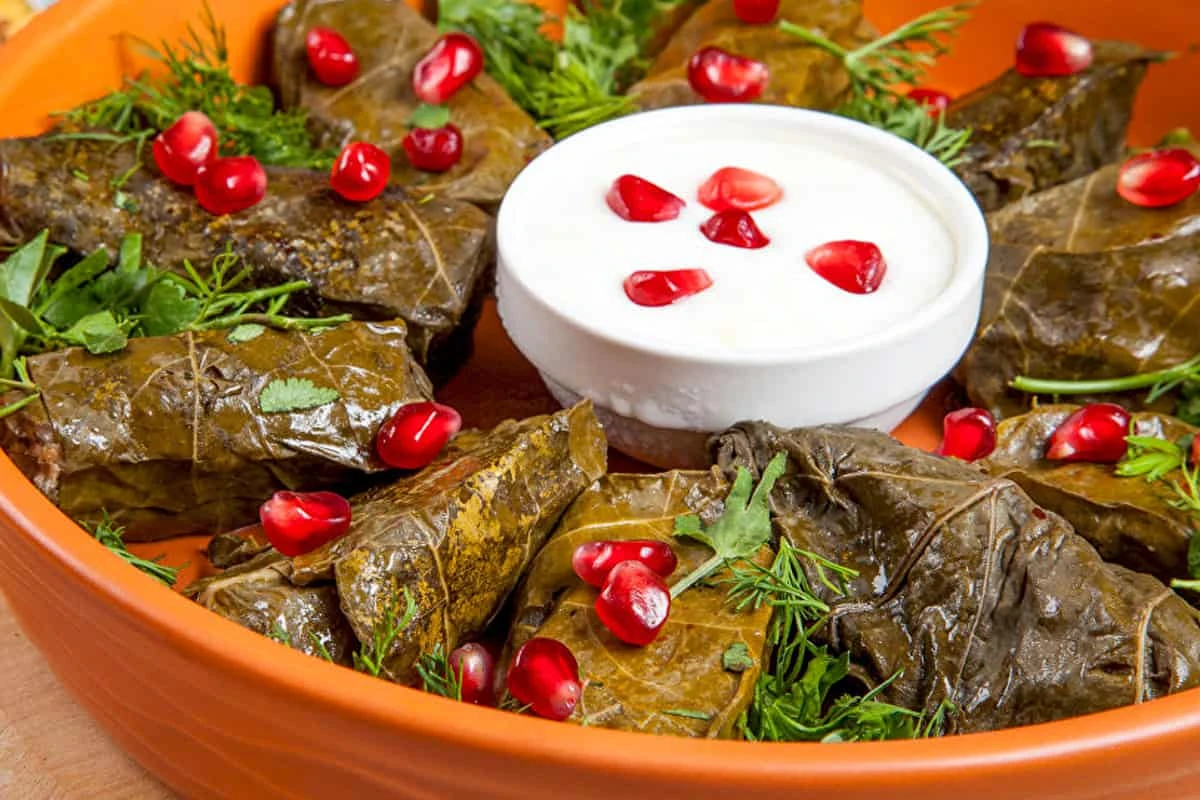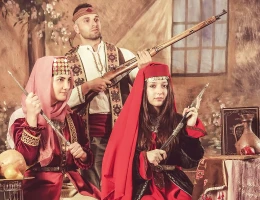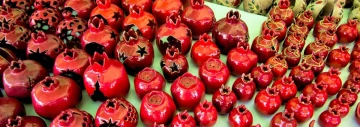Armenians are a nation, proud of their traditions and customs, that have passed through the centuries. Local residents, as before, respect their elders, they are attached to their families and are hospitable. They celebrate holidays in a big way and enjoy preparing national dishes. We will tell you about the culture of Armenia, its customs and traditions.
Relationships, mentality
The mentality of Armenians was formed under the influence of the history of the state and is based on centuries-old traditions. The Armenian people are proud of their race, devoted to their family, they are welcoming and friendly.
Despite their commitment to traditions and pride in belonging to the nation, Armenians are freedom-loving people. They do not like to obey and are ready to defend their rights. This is associated with the numerous oppressions that Armenia has been subjected to. And for that main reason Armenians feel truly safe and comfortable only at home.There are many traditions and customs in Armenia related to relationships between people.
Among them:
- Greeting with a kiss. A kiss on the cheek is the most common way to greet friends and relatives. In addition, women often hold hands when meeting, which is considered a sign of warm relations. A person unfamiliar with the traditions may think that people have not seen each other for a long time. However, Armenians greet each other this way even if they met the day before.
- Thank you in French. As a sign of gratitude, Armenians often say "thank you" not in Armenian, but in French. It is impossible to determine exactly why the French word has taken root in Armenia. But the fact remains. So, do not be surprised if someone says "Merci, jan!". "Jan" does not have an exact translation, but is used in relation to a close and respected interlocutor.
- Personal questions. Armenians are open to communication and love simplicity in relationships. During a conversation, they may ask personal questions, ask the interlocutor about his life in detail. This is not considered bad manners, on the contrary, it is a sign of care and sincere empathy.
- Warm relations with neighbors. Neighbors in Armenia are close people, almost like family members. They can come to visit without an invitation, it is common to share food with them and meet for a cup of coffee.
- Being late is the norm. Armenians cannot boast of punctuality. They are late both for holiday celebrations and official events. Being 15-20 minutes late is considered decent. Therefore, if you plan to invite an Armenian to visit, give him a time with some reserve.
One of the national qualities of Armenians is respect for elders. When communicating with an elder, it is not customary to talk a lot, and even more so to interrupt. When an elderly person enters the house, as a sign of respect, the youth stands up and sits down only after the elder's invitation.
Traditional dishes

Dolma with grape leaves
An integral part of Armenian hospitality is a large feast, where lavash and national dishes are always served. Lavash in Armenia is not just bread, it is the country's cultural heritage. It is not by chance that in 2014, "The preparation, meaning and appearance of traditional Armenian lavash bread as an expression of Armenian culture" was included in the UNESCO Representative List of the Intangible Cultural Heritage of Humanity.
Traditional Armenian dishes are hearty and very high in calories. Locals love meat and pastries. In addition, they use a lot of salt. So much so that in 2022, the government were banned salt shakers in cafes and restaurants in the country.
National dishes of Armenia:
- Khorovats. This is the name of Armenian barbecue. It is made from pork, less often from lamb and veal. It is served with vegetables cooked on the grill, seasoned with salt and crushed garlic.
- Harissa. Porridge with chicken, which is prepared from wheat groats dzavar. The groats are simmered over low heat until they turn into a homogeneous mass. Afterwards, boiled chicken pulp is added to it.
- Tolma. Grape leaves stuffed with rice and minced meat. The name of the dish comes from the word "toli", which means "grapevine".
- Kyufta. Boiled meatballs made from ground beef, served drizzled with melted butter and sprinkled with herbs.
- Kyalla. Lamb or beef head baked with spices and vegetables in an earth oven. Initially, this dish was prepared by the poor who could not afford to eat good meat. But today it is considered a delicacy and is served in restaurants with Armenian cuisine.
- Aveluk. Traditional Armenian soup made from aveluk (horse sorrel).
- Bozbash. Soup made from lamb and chickpeas.
- Spas. Soup based on fermented milk.
- Khashlama. Thick soup made from beef or lamb and lots of vegetables. More like a stew.
- Ghapama. Pumpkin stuffed with rice with the addition of dried fruits, nuts, and honey.
- Barurik. Sweet dish resembling a roll with a filling of nuts, sugar and cinnamon.
- Alani. Dried peaches stuffed with nuts.
- Sharots. Analogue of churchkhela, the difference of which lies in the use of a mixture of three spices: cinnamon, cloves, and cardamom. Sharots is also referred to as sweet sujukh.
Armenia is famous not only for its traditional dishes, but also drinks. Here people prefer to drink coffee, tan, and local mineral water. And, of course, big feasts are not complete without Armenian cognac.

Baking lavash in a traditional Armenian tonir
Traditional clothing
The traditional Armenian costume is called taraz. Women used to wear dresses made of satin, silk or velvet. The dresses were wrapped, had slits on the sleeves, and were circled with a belt on which national pattern was imprinted. An apron was worn over it. Its color and decoration could tell which region of the country the owner of the outfit was from.Under the dress, underwear was necessarily worn – a long shirt, which was called khalav, as well as loose-fitting pants pokhan. These items of clothing were sewn from cotton fabric.
On the head, women wore posha – a headdress in the form of a skullcap, embroidered with beads and golden threads. It was wrapped with a silk scarf. In the southern regions, posha had a more complex design – long decorations were attached to it, which hung at the temples and in front of the forehead.
Men's taraz included a shirt, a caftan and loose-fitting pants. Shirts were made of chintz or silk, decorated with a stand-up collar with a side button. A caftan, worn over a shirt, was worn by wealthier residents.
Ornament played a special role in Armenian taraz. It served as a talisman and protected against the evil eye. Sleeves, hems, neck openings, belts, aprons, and bibs were decorated with traditional patterns.
The most common colors for clothing were red, blue, purple, and green. Red represented life, fertility, and warmth. Blue and purple were used as protection against diseases. And green was considered a symbol of youth and family.

Group in traditional Armenian costumes
Traditional Dances

Traditional dance at an Armenian wedding
Armenians love to sing and dance. For every event, be it a wedding or a victory celebration, there are dances in Armenia. Some of them are performed by professional groups, but most are known and danced by ordinary people.
Traditional dances:- Kochari. Dance, that symbolizes strength and fighting spirit. It was captured near the walls of the Reichstag in 1945. And in 2017, it was inscribed in the UNESCO Representative List of the Intangible Cultural Heritage of Humanity.
- Berd. Dance, that means "fortress" in translation. And it's not random. The men dancing it stand on each other's shoulders, thus creating a wall.
- Yarkhushta. Dance, that originated to raise fighting spirit before battles. The dancers depict a fight and allegorically attack each other.
- Uzundara. This dance is traditionally danced at a wedding by the bride – alone or with her friends. Its essence is to say goodbye to the parental home.
- Kertsi. A distinctive type of military dance, sometimes referred to as a hunting dance. In this dance style, the leading steps are performed in a half-squatting position and are interpreted as the stealthy movements of a hunter going after prey, aiming not to frighten the animal away.
Today, traditional Armenian dances have changed somewhat. For instance, men's military dances can be seen performed by women's and mixed groups. But despite this, Armenians have managed to preserve their historical dance traditions.
Folk music
Armenian music is distinguished by its originality, which is largely achieved through the use of national musical instruments:- strings – pandir, tavigh, knar;
- wind instruments – duduk, zurna, pkoo;
- percussion instruments – dhol.
National Armenian wind instrument called duduk deserves special mention. Duduk/tsiranapogh (apricot-tree made wind instrument) stands for the most ancient Armenian musical instrument, the roots of heartwarming music of which go back to the times of the Armenian King Tigran the Great (95-55 BC). On the front side there are 7 or 8 holes, and on the back – 1 or 2. The sound of the duduk gives off warmth and softness. The sound of duduk was first "heard" in the movie "Last Temptation of Christ". It is played in the soundtracks to such world-famous movies, as "Avatar", "The Da Vinci Code", "Gladiator". Djivan Gasparyan is recognized as the most accomplished and influential performer in the whole history of duduk. The music of duduk is inscribed in the UNESCO Representative List of the Intangible Cultural Heritage of Humanity.

Djivan Gasparyan performing a melody on the duduk
Family traditions
Family and children are the main values of the Armenian nation. The head of the family is the man. The woman is the keeper of the hearth, she is the wife and mother.The main family traditions of Armenians:
- In Armenia, it is customary to live with parents. Sons bring their wives to their father's house. In case there are several sons in the family, then the parents usually live with the family of the eldest son.
- Wedding is a large festive event to which all relatives and friends are invited. After the marriage, the newlyweds break plates for good luck. And during the celebration, the bride is given a baby boy to hold, so that the first boy born to the couple be a boy.
- In Armenia, children are very loved, so families are mostly large. The birth of the first-born boy is considered a good sign and promises prosperity to the whole family.
- Child's christening is considered a special celebration. It is customary to hold it on the 8th day of the baby's life.
- When a child gets his/her first tooth, the parents invite all the relatives to visit. During the celebration, it is customary to conduct a ritual by which the baby chooses his future profession: objects from different fields of activity are placed around him – whichever one the baby chooses, that is what he/she will become. The name of the ritual is "atamhatik" in Armenian.
Armenians are famous for their attachment to family. Therefore, the divorce rate in Armenia is relatively low. Although in the last decade this figure has begun to increase rapidly.

Trndez in Armenia – a celebration of family traditions
Armenian hospitality
Armenians are a hospitable nation. Guests in Armenia are greeted with hospitality, warmth and a set table. Moreover, everyone who crosses the threshold of an Armenian home becomes a guest.
Once in an Armenian home, one cannot refuse treats. This is considered disrespectful to the hosts. Therefore, if you are invited to visit Armenians, it is better to work up an appetite in advance and prepare to taste all sorts of national dishes.

Armenian hospitality: a generous table and legendary brandy












